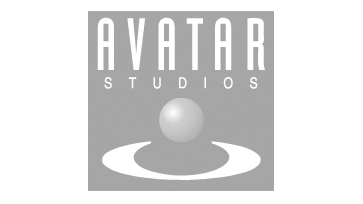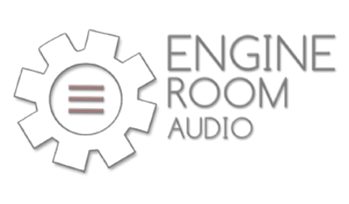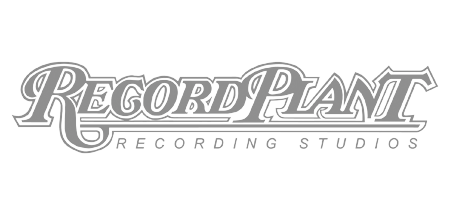Mixing before mastering:
An introduction
Here’s what you need to do in the mixing stage to get the most out of mastering.
If you’re new to mastering, you’re used to thinking of mixing as the last step in audio production – that’s where you wrap things up, add compression/limiting and so on. But when you’re mixing with subsequent mastering in mind, you may have to change your approach… at least to some degree. Here’s how.
Low Cut Your Tracks
An often-overlooked thing is that a lot of instruments don’t provide much information in the lowest part of the frequency spectrum. So, you might as well cut or attenuate those frequencies for instruments like electric guitars, snares, toms, brass, etc. . The thing about these lower frequencies, although they are not that prominent in a given track, is that they “stack” when they interact with other tracks with a lot of low end. You could end up masking some of the frequency spectrum that’s vital for kick drum and bass. Trust us: If you low trim the low end in some of your tracks, you’ll get a punchier bass and more clarity.

Take Care of Clashing Instruments
Ever had the feeling that two or more instruments in your mix are fighting for space? It’s important that you address this in mixing, although it can sometimes be a challenge. The first tool you should reach for in this situation is parametric-EQ.
The best way to use an EQ is to cut frequencies rather than boost them. But which frequencies in the span from 20 – 20,000 Hz (normal audible range) should you cut? Well, here’s a guided tour of the frequency spectrum using some of the most common instruments.
20 – 40 Hz
This frequency range is mostly inaudible and therefore not important to your mix. However, if you’re mastering for BIG playback systems like cinematic speakers, you should pay careful attention to these low frequencies. Either use a low-cut filter or turn down the EQ gain in this area.
40 – 80 Hz
This is where the important frequencies that make up “the bottom” of kick drums and basses live. Depending on genre, this area can be rather crowded. A good starting point would be to let the kick drum occupy the space from 50 – 60 Hz and let the bass dominate the space from 60 – 80 Hz. As with all creative things, there’s no absolute rule, so use your ears.
80 Hz(-ish)
If you conducted an experiment to find out where the fullness of an acoustic guitar came from, chances are you’d end up with the answer: around 80 Hz. If you repeated the experiment for a range of pianos (upright as well as grand pianos) and organs, you’d probably arrive at the same answer.
So, in a mix with acoustic guitars, pianos and/or organ, how can you make all these instruments sound full, but not drown each other out in that frequency area? That’s a hard thing to achieve. In many cases you’d have to choose a single instrument that you’d like to sound “the fullest”. In other words, you could cut a few dB in this range from the remaining instruments in the mix. Try to make an A/B-comparison to see, if that add more clarity to your mix (and remember to not overdo the EQ’ing).
120 Hz
Where on the frequency spectrum does vocal fullness live? It depends on who’s singing, but 120 Hz is a good place to begin your search. Sweep a boosted EQ-band around this area until you identify the sweet-spot. If you hear other instruments clashing with this frequency, you should EQ them accordingly.
200 Hz
Many hi-hats and cymbals have their fundamental frequency somewhere around 200 Hz. But it varies depending on size, shape and material, of course. If you’re unlucky, the fatness of your snare drum could be masked out somewhat by the cymbals. Sweep a boosted EQ-band around this frequency area to determine if that’s the case.
240 – 500 Hz
What you could describe as the ‘body’ of guitars and organs live in this frequency area. And of course, the frequency range is important for voices. Furthermore, integral parts of kick drums and toms rely on these lower-mid frequencies. To create space for all these elements you have to be creative with the EQ. A good place to start would be to begin with the vocal. Once you’ve sculpted it so that it stands out in the mix, make an A/B comparison with guitar and organ tracks to see if there are any clashes in this frequency area. Then EQ the instruments accordingly.
500 Hz – 1 kHz
Can’t hear the attack of the bass or the snare? Then you should look into this frequency area. Sweep a boosted EQ-band around until the attack becomes clearer. And if the other instruments in your mix have a few dB to spare at the same frequencies? EQ them to make room.
Many electric guitarists see 1 kHz as ‘their’ space in the mix – perhaps because most other instruments sound perfectly fine when you cut a few dB at this frequency band. Remember: It’s better to cut than to boost with the EQ bands.
1 – 5 kHz
This frequency range is important to all instruments, because it’s where “presence” lives. And ideally, you want all instruments to be present in the mix, don’t you? But the thing is, if all instruments are right there and in-your-face’ish, none of them really are. They’ll just end up masking each other out. What you should do, is begin with the instruments that are most important in the mix and work your way backwards. Especially, you should make sure that the vocals aren’t drowned out. If they are, pay careful attention to the frequencies around 5 kHz. Keep in mind that the frequency area from 2 – 4 kHz is experienced as being louder, because our hearing is more sensitive to these frequencies (which are also integral to speech recognition).
6 – 10 kHz
What you’d describe as the “sparkly” sounds of hi-hats and cymbals live in this frequency range. If you find them to be too harsh, this is where you could lower them a couple of dB. What we perceive as the “brilliance” of electric guitars reside in the lower part of this range and could be conflicting with cymbal “sizzle”.
10 – 15 kHz
We often speak of air in relation to vocals. And this range is where it happens. Many atmospheric pads and certain percussion instruments, such as tambourine, occupy the same space. Furthermore, transient sounds of stringed instruments often spike into these higher frequencies. Most modern pop productions are top-heavy, so if that’s the sound you’re going for, you can add a high-shelf lift at around 9 or 10 kHz for some tracks. But remember to use it moderately.
15 – 20 kHz
Many people can’t even hear these high treble frequencies – especially old people and musicians. And don’t get us started on old musicians! But for the luckier individuals these top-end frequencies represent even more of the ‘air’ described above. The closer you get to 20 kHz, the less important the frequencies become. You could easily apply a high-cut starting at around 18 kHz without anyone noticing. We’re not saying that you should. But you could.
That completes our guided tour of the frequency spectrum.

Gate Your Drums
Gated drums with reverb were as important to 1980’s music as shoulder pads were to 1980’s fashion. But we’re not suggesting that you should go all “In the air tonight” on your drum tracks. No, we’re talking about a different kind of gating here.
Let’s say you are recording a drum-set. The snare microphone will also pick up the kick drum sound and vice versa. We don’t want that. In that kind of situation, an expander comes in handy.
From an engineering point of view, an expander is built the same way that a compressor is – only in reverse. This means that where a compressor reduces the louder parts of a signal and increases the lower parts, an ‘downward’ expander attenuates the softer parts of a signal.
In the example above, an expander would emphasize the snare drum sounds by turning down the quieter kick drum sounds. In other words: If the threshold of your expander is set right, you’ll be able to isolate the individual sounds, which results in a clearer and more well-defined drum track. When used this way, an expander is sometimes referred to as a noise gate. This, of course, is totally different to a gated reverb effect, although some of the same techniques are involved.

Easy with the reverb
Plate, spring, room, hall. There are a lot of reverb types to choose from. But you should be careful not to use too much reverb in your mix. The mix will sound less professional and you’ll end up with a weaker master. When is it too much? If the reverb is not there to augment the sound of the tracks, but simply to create a backdrop of ambience – to make everything sound of ‘more’.
Check for mono-compatibility
This is a really important point (that’s easy to forget). When you’re trying to eliminate instrument clashes in your mix, it can be tempting to solve the problem by panning the difficult instruments to opposite sides. But if you do that, you’re fooling yourself. Extreme panning will only give you an illusion of a well-balanced mix. Trust us: The clashes will reappear whenever someone listens to your track in mono.
A good rule of thumb is to check for mono-compatibility every now and then in the mixing phase. You should do that to see whether there are phase issues or instrument clashes.
Headroom: How much is enough?
How much headroom should a mix have for a mastering engineer to work his magic? Some suggest -6 dBFS, some -3 dBFS. And although both answers are correct, a more correct answer is: Just don’t allow peak levels to reach 0 dBFS on your DAW’s master bus or in your files. It’s that simple.
You should also remember to downmix everything in at least 24-bit. But before you do so, make sure there are no loudness maximizers or aggressive limiters activated on the master bus.
Highest Resolution Possible
At what sample rate did you record your tracks? Make sure the stereo files used in the mastering process has the same quality. If you recorded in 48 kHz/24 bit, that should be the resolution the track is mastered in. The better source material used for mastering, the better results you’re going to get. For a decent mastering process, though, you should downmix to 24-bit. You may need to deliver a master in 44.1 kHz/16 bit, but any resampling needed to get there should be a step in the mastering process.
Why Alternate Mixes Rock
No matter if you’re mastering your song yourself or hire someone to do it for you, it can be helpful to have alternate mixes. In the mixing phase you often have to make some tough choices. What guitar solo works best? Should the vocal doubling be more discrete or more pronounced? More or less cowbell?
With alternate mixes you don’t need to choose right there and then. In the mastering phase some of these creative decisions will be a lot easier to make – either by the mastering engineer or yourself.
The alternative to alternate mixes? You have to go back and remix your song if an issue is discovered in the mastering process. So although it may not be necessary, alternate mixes can potentially save you a lot of time (and sometimes money).














